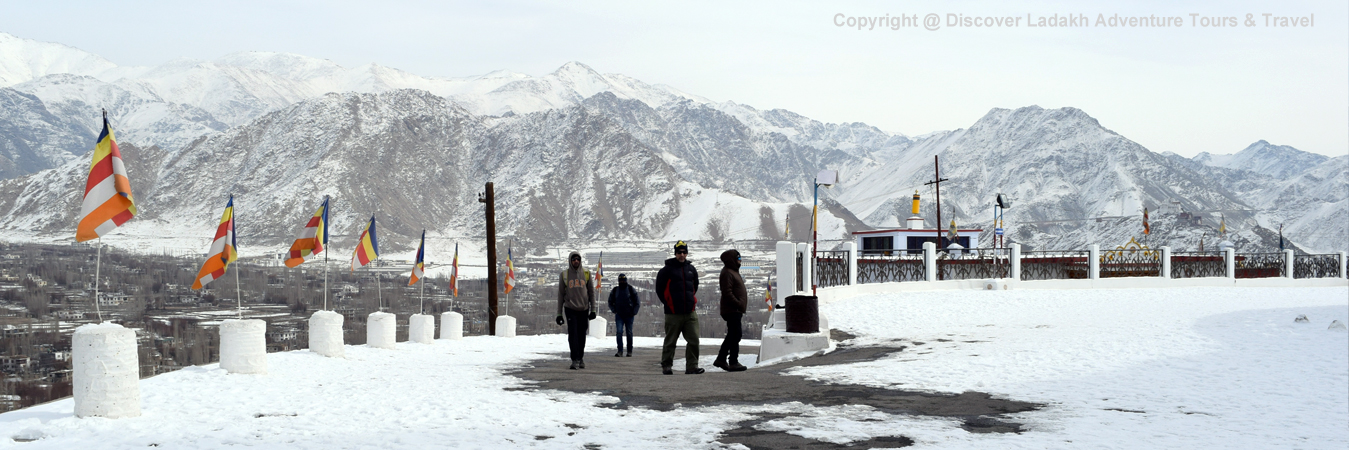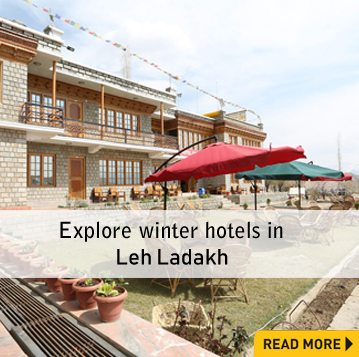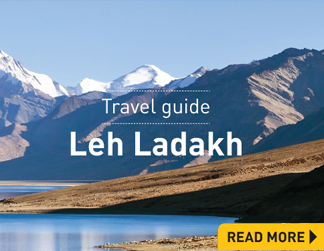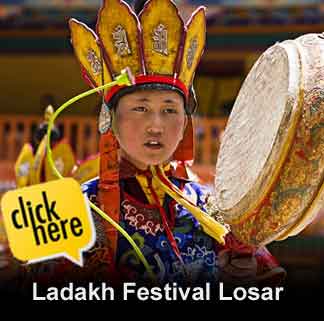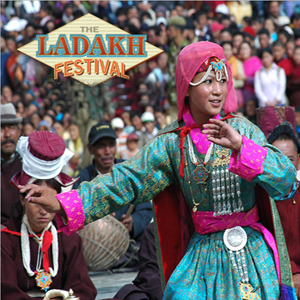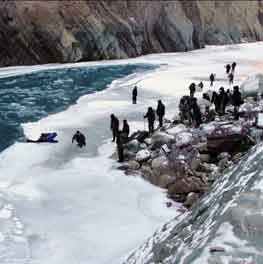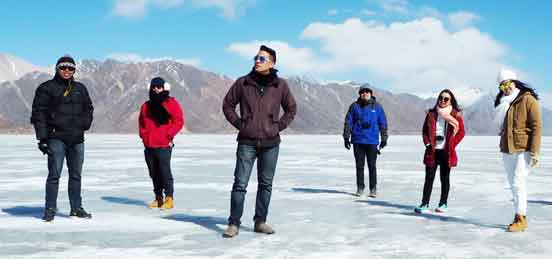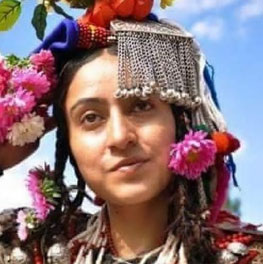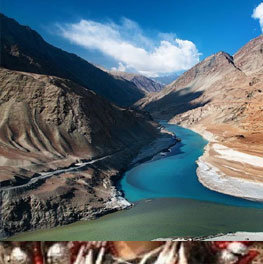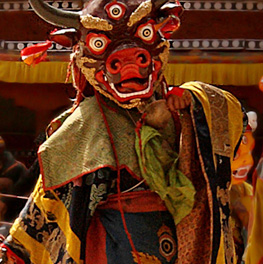In order to make your visit to Ladakh more pleasant, both for yourself and for the people who live here and whose guest you are, there are some general guidelines that may be helpful. DO dress modestly both in town and at the gompas, as Ladakhis are very modest in appearance, take their religious beliefs seriously and can be offended by skimpy Western dress.
DO take off your shoes when entering any room in a gompa. It is not necessary to remove shoes in the open sections of a gompa, such as courtyards.
DO pass chortens and prayer flag poles on the left, in a clockwise direction, always keeping your right side to the chorten or prayer flag pole.
DO take a flashlight to the gompas. This is helpful in seeing murals and statues in dimly lit rooms.
DON'T give money, sweets or other gifts to begging children. Begging by children and child lamas in the gompas has only begun since tourism arrived in Ladakh and is unacceptable behaviour that should not be encouraged. If you really want to give something, donate pencils, pens, paper or note books to a village or gompa school. There is a school in every village and every school would be grateful to receive these donations. If a gompa has a school, it will also gratefully receive donations of school supplies.
DON'T take pictures in gompa rooms where photography is prohibited, either by posted signs or a lama telling you.
DON'T point at statues of the Buddha as it is considered highly disrespectful.
DON'T stand on the base of chortens or on mani walls. These are sacred objects and to do so is desecration that is offensive to Ladakhis.
Glossary or Religious Terms
AKSHOBYA The Imperturbable Buddha; the Buddha of the East AMCHI the Buddha of Medicine; Ladakhi word for medicine man
AMITABHA the Boundless Light Buddha; the Buddha of the West
ARHAT literally, the "Worthy Ones", those who have attained Nirvana. Traditionally, 16 Arhats are portrayed. Arhats are associated with the Hinayana school of Buddhism.
AVALOKITESVARA a Bodhisattva whose name means "the Lord of All He Surveys" and who is analogous to the Hindu god Shiva. Easily recognizable as portrayed with eleven heads (nine Bodhisattva images, one head showing anger at the suffering in the world and a Buddha head on top). He can also be portrayed with 1,000 arms, each with an eye or a weapon. He is believed to be incarnated in the Dalai Lama.
BODHISATTVA a follower of Buddha associated with the Mahayana school of Buddhism, who has attained enlightenment but defers Nirvana and remains in the cycle of death and rebirth until, with his help, all reach Nirvana and its release from suffering.
BU-STON a lamaist religious teacher, 1290 to 1364 AD who compiled the Tandshur, a 225-volume commentary on the Kandshur.
CHORTEN literally, a "receptacle for offerings". It is the Tibetan word for Stupa (which is a Sanskrit word). It may contain as an offering the ashes of the dead, jewels, holy writings, food etc. Its rectangular base represents the earth, the rounded central section or dome represents fire and the crowning parasol represents wind. These are the elements that Buddhists believe are the components of the universe and also the elements from which man is made.
DALAI LAMA spiritual head of the yellow-hat (Gelug pa) sect of Buddhism and the living incarnation of Avalokitesvara. The current 14th incarnation is living in Dharamsala, Himachal Pradesh.
DUKHANG the assembly hall where lamas gather for prayers and meals.
GELUG PA the yellow-hat sect founded by Tsong-kha-pa. This sect and its gompas provide the most comprehensive and systematic education to its students. The basic curriculum covers five basic courses (including dialectics, principal doctrines and disciplinary rules) and takes 20 years to complete. The head of the Gelug pa sect is the Dalai Lama.
GOMPA a Tibetan Buddhist monastery
HINAYANA "Lesser Vehicle", one of the two major schools of Buddhism, also called Therevada - the "Way of the Ancients" by its followers and probably represents the more original form of Buddhist beliefs. Hinayana Buddhism has spread to much of south and southeast Asia. The historical Buddha retains a central position and a person seeking salvation tries to attain the state of an Arhat.
KANDSHUR the 108 volumes of the Buddha's teachings, translated into Tibetan from Pali and Sanskrit by Padme Sambhava. A set is usually found in each gompa.
KHATA a Tibetan prayer scarf made of white silk, traditionally given as a sign of respect and devotion to a lama when brought into his presence. It is frequently placed around the neck on statues of Buddha and other divinities.
LAMA a Buddhist monk. Traditionally, every Ladakhi family sent one son at the age of 5 or 6, to a monastery to be educated (gompas were the only schools). On adulthood, he could decide not to become a lama, but this decision was often frowned upon. The practice of sending a son to a gompa is now dying out.
MAHAKALA "the Great and Black One", the fiercest Tibetan guardian divinity and his image is generally found by doorways in all the monasteries.
MAHAYANA "Greater Vehicle" school of Buddhism which spread to central Asia, China, Korea, Japan and Tibet. This school holds that the historical Buddha was the earthly incarnation of an eternal cosmic Buddha and has incorporated a proliferation of celestial persons (eternal Buddhas, major and minor deities, saint and disciples, mythical beings) and Bodhisattvas. The representation of these celestial persons forms the basis of most artistic work in Ladakhi gompas
MAITREYA the Buddha of the Future, also called the Buddha of Compassion (Maitreya is the Sanskrit word for compassion). Buddhism holds that in the future the world will be so full of chaos and unhappiness that the Future Buddha will feel compassion for the world's inhabitants. Legend says that the Maitreya will come from the West.
MANDALA Tibetan geometrical and astrological representation of the world showing different stages of existence and the cycles of death and rebirth. Mandalas are often used as a meditation device.
MANI STONE a stone carved with the Tibetan Buddhist chant Om Mani Padme Hum, meaning "Hail to the jewel in the lotus" and referring to the Lord Buddha. Many mani stones may be placed together to form a mani wall, each stone bearing either this inscription, other prayers or depiction of various divinities.
MANJUSRI a Bodhisattva, the God of Wisdom
NIRVANA the ultimate aim of Buddhism, where one attains enlightenment and leaves the cycle of death and rebirth.
PADME SAMBHAVA an 8th century Indian Buddhist, invited to Tibet by the King to teach him Buddhism. He translated Buddhist texts from their original languages of Pali and Sanskrit into Tibetan. His name means "born from a jewel" and some believe he is not an historical figure but a composite of several Indian Buddhists who came to Tibet. He is usually depicted a thin moustache, often curled at the ends.
PRAJNAPARAMITAthe Goddess Perfection of Wisdom, usually shown with Manjusri.
RIMPOCHE literally "Precious", a title conferred on incarnate lamas who are generally heads of gompas.
SAKYAMUNI the Historical Buddha who probably lived 563 to 480 BC, and literally meaning "belonging to the Sakya clan". Sakyamuni is usually shown with blue hair.
TANDSHUR the 225-volume commentary compiled by Bu-Ston on the Kandshur. A complete set is usually found in every gompa.
TARA the "Saviouress" and consort of Avalokitesvara, "Dolma" in Ladakhi.
THANKHA a Buddhist painting on cloth which conveys a message (the story of Buddha's life, a mandala of life's existence, etc.). Thankhas were originally used by lamas to spread Buddhism in a non-literate society. It could be used as a teaching aid and then rolled up and easily transported by pack animals over the Himalayas.
TSONG-KHA-PA founder of the Gelug pa sect of Buddhism, (1357 to 1419 AD)
VAIROCANA the Teaching Buddha. He is always shown with the hand gesture depicting turning a wheel (which represents Buddhist doctrine).
VAJRASATTAVA a Bodhisattva.

